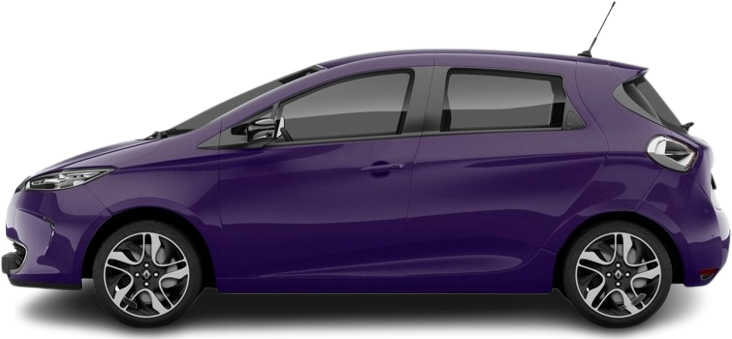Renault Zoe Z.E. 40 R75/R90 Entry (2016-2018) supports only AC charging.
The car is built on a 400 V architecture and can charge at up to 22 kW AC.
The 44.1 kWh battery (41 kWh usable) delivers a real-world range of 188 miles per charge, with an average efficiency of 21.8 kWh/100 mi (4.59 miles per kWh).

Charging the Renault Zoe Z.E. 40 R75/R90 Entry (2016-2018) from % to % using a outlet takes approximately h min. If you plug it in now, it'll be ready by .
This charging session adds kWh to the battery, resulting in an increase of mi in range, assuming an average car efficiency of 21.8 kWh per 100 mi. Put differently, you gain mi of range per hour of charge.
The average charging power is around kilowatts. It's influenced by various factors, including:The estimated cost of this charging session is $, based on an electricity rate of $ per kilowatt-hour.
Curious about how the Renault Zoe Z.E. 40 R75/R90 Entry (2016-2018) stacks up against other electric cars when it comes to AC charging? Check out Green Cars Compare EV Rankings to see a side-by-side comparison.
Charging the Renault Zoe Z.E. 40 R75/R90 Entry (2016-2018) from % to % using a station takes approximately h min. If you plug it in now, it'll be ready by .
This charging session adds kWh to the battery, resulting in an increase of mi in range, assuming an average car efficiency of 21.8 kWh per 100 mi. Put differently, you gain mi of range per hour of charge.
The average charging power is around kilowatts. It's influenced by various factors, including:The estimated cost of this charging session is $, based on an electricity rate of $ per kilowatt-hour.
Curious about how the Renault Zoe Z.E. 40 R75/R90 Entry (2016-2018) stacks up against other electric cars when it comes to DC charging? Check out Green Cars Compare EV Rankings to see a side-by-side comparison.
Discussion